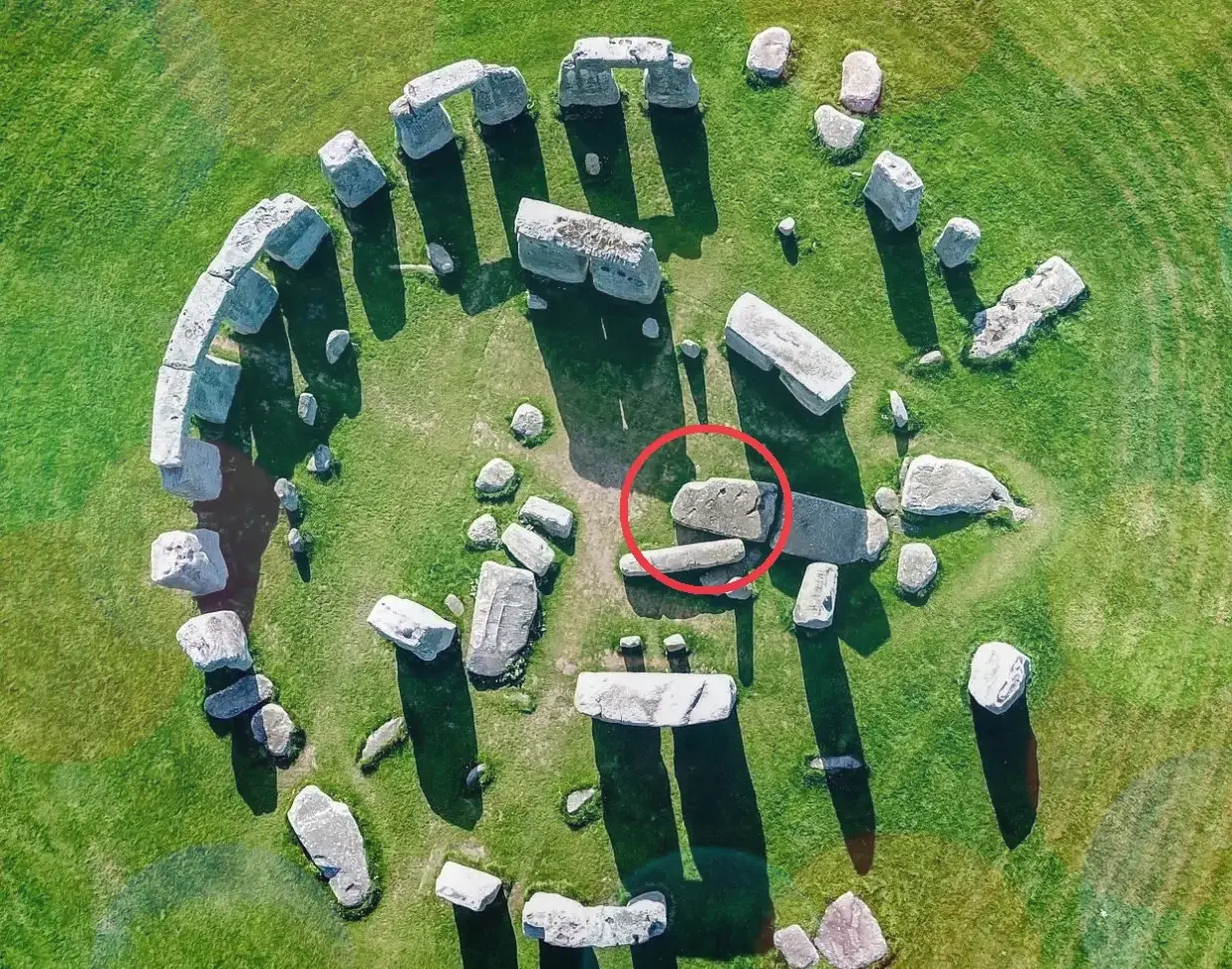
A groundbreaking study published in Nature has challenged a century-old theory about the origins of Stonehenge’s Altar Stone. Researchers now believe that this significant stone, central to the ancient monument in southern England, was transported over 435 miles (700 kilometers) from northeastern Scotland nearly 5,000 years ago.

For over 100 years, it was widely accepted that the Altar Stone came from what is now Wales. This stone, the largest of the bluestones used at Stonehenge, weighs approximately 13,227 pounds (6 metric tons) and is positioned at the heart of the stone circle. According to Nick Pearce, a professor in the Department of Geography and Earth Sciences at Aberystwyth University, “The stone’s journey of at least 700 km is the longest recorded movement of any stone used in a monument from that era.”
The study, led by researchers from Curtin University’s School of Earth and Planetary Sciences, reveals new insights into Stonehenge’s construction and the advanced capabilities of Neolithic societies. Construction of Stonehenge began around 3000 BC and spanned several phases, with the Altar Stone likely installed during the second phase between 2620 and 2480 BC. This new understanding suggests that ancient Britons had sophisticated methods for transporting massive stones, potentially involving maritime routes.

The research also opens new perspectives on prehistoric Britain’s societal organization. Chris Kirkland, a professor at Curtin University, noted, “Transporting such massive stones over land from Scotland to southern England would have been extremely challenging. This indicates a likely maritime shipping route and suggests advanced trade networks and societal organization.”
To uncover the Altar Stone’s origins, researchers analyzed mineral grains from the stone fragments. The analysis identified zircon, apatite, and rutile grains, dating from 1 billion to 470 million years ago. This “chemical fingerprint” matched Old Red Sandstone from the Orcadian Basin in northeast Scotland, contrasting sharply with stones from Wales.
Lead author Anthony Clarke highlighted the significance of the findings, stating, “Our analysis raises intriguing questions about how such a massive stone was transported around 2600 BC.” Clarke, who grew up near the Preseli Hills in Wales, found a personal connection to the research, reflecting on his early visits to Stonehenge and his return as a researcher.

Despite the breakthrough, questions remain about the exact location in Scotland from which the Altar Stone originated. Richard Bevins, honorary professor at Aberystwyth University, expressed excitement about the discovery, noting that “the hunt will continue to pinpoint the precise source of the Altar Stone.”
Archaeologist Joshua Pollard praised the research as a “great result,” acknowledging the robust scientific methods used to trace the smaller bluestones at Stonehenge.
The Altar Stone now lies on the ground at Stonehenge, partly covered by stones from the Great Trilithon structure. Researchers continue to debate whether the stone was originally upright and its intended purpose. Some suggest it may have been a tribute to the dead, incorporated into Neolithic rituals.
While the exact means of transporting the Altar Stone remains uncertain, the study suggests a possible maritime route, given the geographical challenges of overland transport at the time. The findings underscore the advanced capabilities of Neolithic societies in Britain and provide valuable insights into their trade networks and societal organization.
While Stonehenge’s purpose may remain elusive, the origins of its Altar Stone reveal a fascinating chapter in prehistoric Britain’s history, highlighting the ingenuity and complexity of ancient civilizations.



